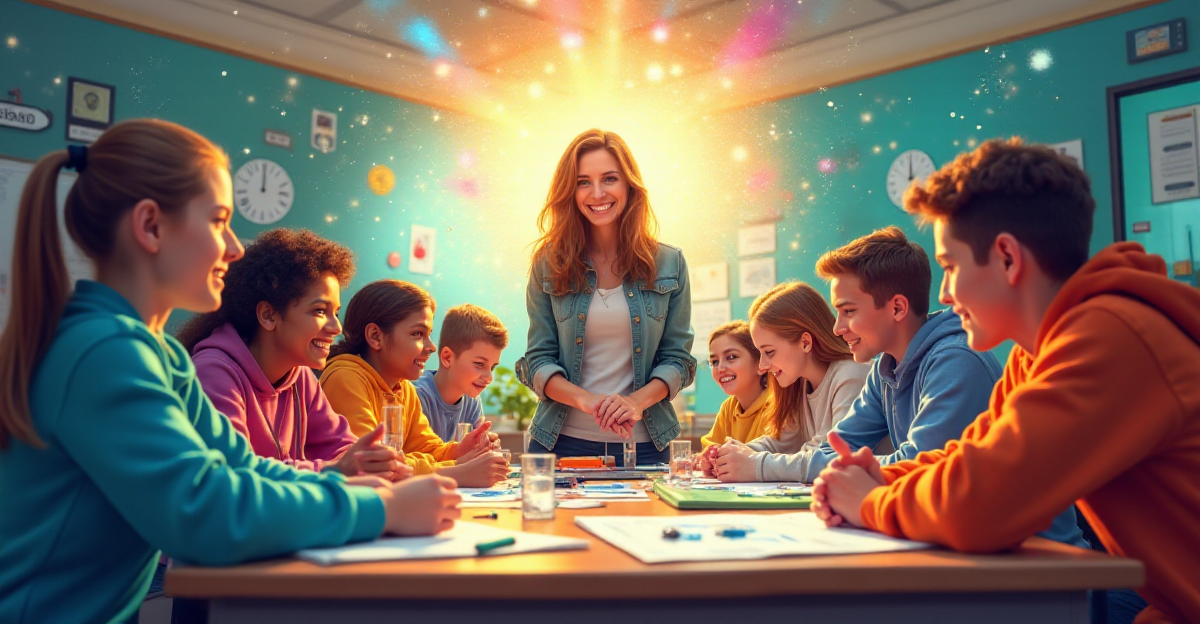Active learning techniques are changing how students interact with material and develop critical thinking ability. Combining conventional and current teaching strategies, this paper investigates methods like group discussions, problem-based learning, and hands-on exercises fostering deeper knowledge from both sides. We explain how active learning could make classrooms more dynamic and inclusive by stressing real-world experiences and the effects of these approaches on student motivation and retention. From first-hand teaching experiences to current research on student involvement, this paper emphasizes why active learning is an essential tool for teachers of today. Find useful advice for applying these techniques in different learning environments so that every student gains from this immersive approach.
Table of Contents
- What is Active Learning?
- The Power of Active Learning in the Classroom: Engaging Students for Success
- Implementing Active Learning: Practical Tips
- Extra’s:
What is Active Learning?

Have you ever found yourself in a classroom feeling as though you were merely passively collecting knowledge? That is not active learning. Active learning is a teaching strategy meant to inspire pupils to engage actively in their own educational process. Active learning transforms classrooms into dynamic environments where students are actively involved in their education, therefore transcending the passive listening to lectures and memorizing of facts that defines learning.
Why Active Learning Matters
Active learning marks a basic change in our attitude to education, not only a trend. Given the complicated problems and often shifting knowledge of today, student engagement is absolutely vital. Lectures and other conventional teaching strategies can provide a basis of information, but occasionally they find it difficult to completely involve pupils and provide the tools required to negotiate the complexity of the actual world.
Active learning helps pupils to engage actively in their educational path. Imagine a classroom in which students are posing questions, offering ideas, and using their knowledge in practical situations. Active learning has that power. It creates a more dynamic and cooperative learning environment in which students choose knowledge from one another as well as from their own experiences. They are producing knowledge and insight, not only learning facts. One instance I observed a teacher using a classroom approach whereby students created a product to address a local community issue. Their level of engagement and motivation was simply outstanding! They were using their knowledge to create actual change, not only learning facts. That is the potential of active learning.
Real-world examples of Active Learning
Let us now examine some actual case studies of active learning applied in schools.
Students working in small groups tackle tasks, do research, or produce presentations collaboratively in cooperative projects. This motivates critical thinking, student-centered learning, and collaboration. In a science class, for instance, students might collaborate to create and carry out an experiment then report back to the class. This kind of endeavor lets students grow personally, learn from one another, and hone their ability to solve problems.
Students assume several roles to replicate real-life events. This can be a quite effective approach to impart communication skills and problem-solving. In a business lesson, for instance, students can role-play a buyer and seller negotiation; in a history class, they could role-play a dispute about a historical event. This helps pupils grow in their capacity for critical thinking, communication, and quick thinking.
Case studies let students examine actual events and create answers. This can help children acquire critical thinking techniques and apply their knowledge to practical issues. In a business lesson, for instance, students might examine a case study on a corporation finding difficulty competing in a market undergoing changes. This helps individuals to apply classroom knowledge to practical issues and hone their critical thinking and problem-solving techniques.
In your own classroom, you could be wondering how to apply active learning. Easier than you could have imagined! Start by including a few active learning techniques into your classes.
Ask questions that challenge students to consider ideas critically and offer their own viewpoints first. Active learning exercises such group discussions, debates, or role-playing could potentially be included into your classes. These techniques might enable your pupils have a more engaged and interesting learning environment. These few adjustments can help your students to become active participants in their educational paths. Recall that active learning is a potent method of instruction capable of revolutionizing student learning; it is not only a catchphrase.
The Power of Active Learning in the Classroom: Engaging Students for Success

Have you ever been bored in a lesson where the teacher only lectures and you are expected to silently absorb material? Many of us have, hence active learning becomes really important. Emphasizing student-centered learning by making learning dynamic, interesting, and meaningful for students, active learning is a method of instruction.
Active learning pushes students to participate in their own learning process rather than only sit-through listening. It’s about learning by doing and using knowledge in sensible applications. It wouldn’t be nearly as successful as picking up a guitar and practicing, imagine learning how to play the guitar only reading a book about guitar chords? Active learning shares this. It calls for teaching strategies outside conventional lectures and rote memorizing.
Making Learning Meaningful: Engaging Classroom Strategies
There are many original approaches to include active learning into the classroom! Imagine a science class where students do experiments to gauge their grasp of a topic or a history class where students argue several angles on a historical event. Students in an English class could have animated conversations over a book they are reading. Beyond only reading and writing tasks, these classroom strategies let students investigate ideas in hands-on, interactive ways, so generating a dynamic learning environment where they can link with practical applications.
Allow me to share with you a little narrative of a moment when I personally saw active learning’s power. We were reading The Catcher in the Rye in a high school English class I was tutoring. Rather than having students produce essays about the book, I thought about doing something else. I assigned each small group of students a different novel character and split the class. They had to investigate their character, examine their motivations, then produce a dramatic presentation bringing their character to life. The students gained so much more than they would have simply reading the book and writing an essay; they were really involved.
Unlocking Student Potential: Benefits of Active Learning
Why therefore should you give active learning any thought? Well, it’s not only about making learning enjoyable; it can also really change how kids develop and learn. Active learning enables students to acquire fundamental competencies for the modern education paradigm and beyond.
- Critical Thinking Skills: When students participate in discussions, debates, and hands-on projects, they develop their ability to analyze information, solve problems, and form their own conclusions.
- Collaboration and Communication Skills: Active learning encourages teamwork and group projects, allowing students to practice their communication skills, build relationships, and learn from their peers.
- Increased Engagement and Motivation: When students are actively involved in their learning, they are more likely to be engaged and motivated to succeed. Active learning makes learning more relevant to their lives, helping them see the value of what they’re learning.
Given the fast changing environment of today, students must be armed with the tools required for success more than ever. By honing critical thinking, communication, and problem-solving abilities—skills much sought after in many professions—active learning makes pupils ready for the modern workforce. Active learning is an effective strategy that can help students realize their own potential and equip them for a future full of opportunities, not only a fad.
Implementing Active Learning: Practical Tips

Encouragement of students to be active participants in their learning paths, active learning is a potent method for modern education. Creating a dynamic and interesting environment where learning transcends reading textbooks or listening to lectures is everything. Rather, students are urged to be critical thinkers, probe ideas, work with others, and apply their knowledge in useful contexts. How then can you really put active learning techniques into use in your classroom? Let us go over some useful advice now.
Consider this: beginning every session with a brief Think-Pair-Share on a theme connected to the course of instruction for that day. This basic exercise motivates students to interact with the content, apply critical thinking, and share their opinions with their friends. Several times in my classroom, I have applied this approach, and it always starts interesting conversations and enables students to relate to the content on a deeper level.
Turning Theory into Practice: Practical Strategies for Implementation
Although initially overwhelming, switching to active learning does not have to mean overhauling your course of instruction. Beginning with little alterations, you can progressively include more active learning exercises. Consider it like adding some spices to a recipe; it will greatly improve the taste without altering the whole cuisine.
Give kids chances to learn by doing. This can call for projects, experiments, or role-playing games. These exercises help increase the interactive nature and appeal of learning. For instance, you might have pupils design a science experiment to test a concept or replicate a history event. Remember, the secret is to make the learning process fun and pertinent for their life.
Harnessing the Power of Technology
These days, technology can be a great tool for improving active learning experiences. Explore and discover among the many digital tools and resources available what best suits you and your pupils.
- Collaboration Platforms: Platforms like Google Docs, Slides, and Sheets allow students to work together on projects, share ideas, and provide feedback in real-time. This fosters collaboration and communication skills and can make group work more efficient and engaging.
- Online Research Tools: Tools like Khan Academy, Coursera, and Edpuzzle provide access to a wealth of educational resources, including videos, interactive exercises, and quizzes. Encourage students to use these platforms for research and to explore topics in more depth.
- Interactive Quizzes and Games: Online platforms like Kahoot! and Quizizz offer interactive quizzes and games that can make learning more fun and engaging. Use these tools to assess student understanding and to make learning more interactive.
Recall that the objective is to provide a classroom where students experience engaged learning, challenge, and motivation. Because it helps students to become active participants in their own learning paths, active learning is a quite successful teaching tool. In the end, building an environment of inquiry and discovery helps pupils to change their educational process.
Start using these active learning techniques right now and see how much more engaged and understanding your kids have!
Extra’s:
For those interested in exploring the intersection of ancient practices and modern scientific advancements, our post “The Ancient Art of Fermentation: Modern Science and Health Benefits” delves into the fascinating world of fermentation, exploring its historical roots and its contemporary applications in promoting health and well-being. For those intrigued by the scientific possibilities of preserving life at extreme temperatures, our post “Life on Pause: Exploring the Wonders of Cryobiology” offers an engaging look into the world of cryobiology and its potential implications for the future of medicine and beyond.
For a deeper understanding of the practical applications of active learning in higher education, you can explore resources such as “Active Learning Strategies for Engaging Students in Higher Education“. This article provides a comprehensive overview of various active learning techniques and their effectiveness in fostering student engagement and deeper learning. For a more in-depth look at the rationale behind active learning and its benefits, “Why Use Active Learning? | Center for Educational Innovation” offers a compelling argument for incorporating active learning into educational practices.












1 thought on “The Power of Active Learning Strategies in Modern Education”